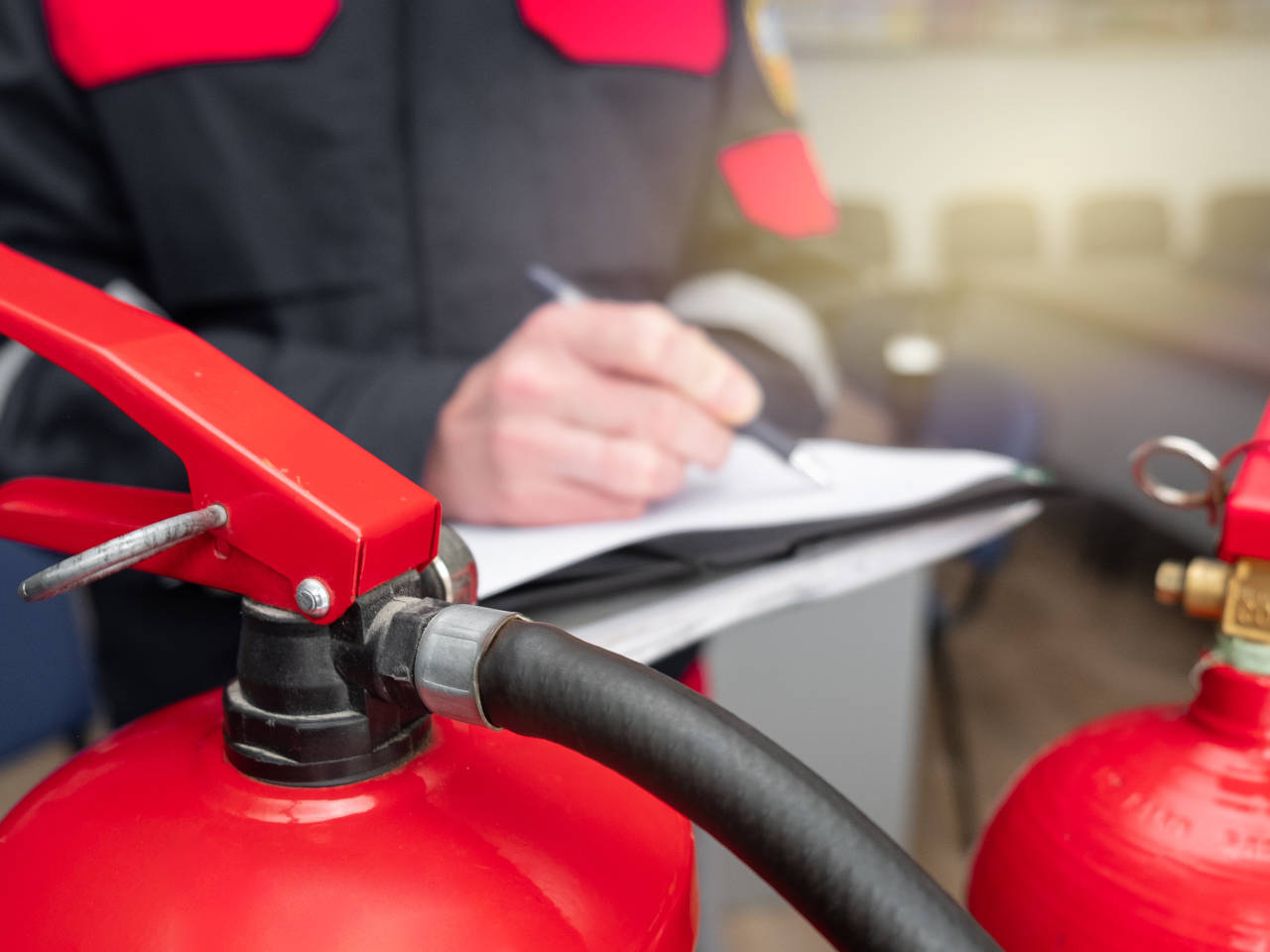
Employers must comply with fire safety regulations and put measures which prevent fires and ensure the safety of employees and others. This guide outlines what you need to know.
In 2019/20, fire and rescue services attended 14,308 fires at UK workplaces, 13,892 of which were accidental. A total of 17 people were killed in those incidents, and 877 people were injured.
While there are many health and safety requirements a business must deal with, these statistics are a stark reminder that fire safety should be a top priority for all businesses.
Our fire safety training course helps you understand your responsibilities under the Regulatory Reform (Fire Safety) Order 2005 and ensures everyone in your workplace knows the risk of workplace fires.
What are the fire safety regulations?
The main legislation that businesses in England and Wales must be aware of is the Regulatory Reform (Fire Safety) Order 2005, commonly known as the ‘Fire Safety Order’.
The order applies to almost all non-domestic premises, buildings, structures and open spaces.
Premises must reach the required fire safety standards, and employees must be provided with adequate fire safety training.
Regular fire risk assessments to identify possible risks must be carried out with measures taken to prevent fires.
The order must be met by a ‘responsible person’. This can be an employer, the owner, the landlord or an occupier.
The fire safety regulations are enforced at most premises by fire and rescue authorities. They carry out targeted inspections and can issue alterations, enforcement and prohibition notices depending on how serious the safety risks are that they find. Non-compliance can result in unlimited fines or up to two years in prison.
What fire safety obligations do employers have?
As well as a fire risk assessment, the fire safety regulations require that some businesses have fire detection and warning systems in place.
The system you use is dependent on the type of building, and the work carried out in it. It can range from a simple shout of ‘fire’, a manually operated device such as an air horn or an electrical detection and warning system. Whatever system you use must be loud enough to be heard by everybody in the building.
The types of fire-fighting equipment and extinguishers in place is also dependent on the premises and the work the organisation does. A risk assessment will help you decide on the type and number of fire extinguishers that are required. The main types of fire extinguishers are:
- Water – For wood, paper, textile and solid material fires (do not use on liquid, electrical or metal fires).
- Foam – For liquid fires (do not use on electrical or metal fires).
- Powder – For liquid and electrical fires (do not use on metal fires).
- Carbon dioxide – For liquid and electrical fires (do not use on metal fires).
Read our guide to the different types of fire extinguisher and how to use them.
Safe routes for leaving the premises in the event of a fire must be available along with suitable fire exit doors.
Appropriate fire safety signs must be used, and businesses should consider whether emergency lighting is necessary.
Staff and other relevant people should be provided with fire safety training, and a sufficient number of employees must be trained as fire wardens to help assist in an emergency.
Regular checks of fire safety measures should be carried out, including ensuring all fire alarms and extinguishers are working, escape routes are clear, fire escapes can be opened easily, and automatic fire doors close correctly.
At least one fire drill should take place each year.
How to carry out a fire safety risk assessment
Fire safety regulations require that organisations carry out regular fire risk assessments.
The Fire Safety Order requires that a ‘responsible person’ oversees fire safety arrangements and ensures that regular fire risk assessments are carried out. For most workplaces, this will be an employer, but it can also be the owner, the landlord or an occupier.
In large and complex premises, it may be more appropriate for the risk assessment to be carried out by a professional fire risk assessor.
If your business has five or more employees, you must keep a record of your fire risk assessment and make it available for inspections by fire and rescue authorities.
Assessments must remain current, so they should be regularly reviewed to ensure precautions are up to date.
The government has published a fire safety risk assessment 5-step checklist for writing a risk assessment:
- Identify fire hazards.
- Identify people at risk.
- Evaluate, remove or reduce the risks.
- Record your findings, prepare an emergency plan and provide training.
- Review and update the fire risk assessment regularly.
To prevent workplace fires, risk assessments should identify potential fire hazards and evaluate the risks to people arising from them, taking into account the adequacy of existing fire precautions, and deciding whether or not the fire risk is acceptable without further fire precautions. This can include identifying what substances, processes and materials have the potential to cause accidental fires or explosions, and identify the people who may be most at risk from a fire in the workplace.
Once the hazards have been identified, the Responsible Person must consider how to remove or reduce the risks. You should look to prevent fires happening at all or have precautions in place to protect people should a fire occur. Although not an exhaustive list, measures may include:
- Removing or separating sources of ignition and flammable substances.
- Preventing accidental fires with steps such as making sure heaters cannot be knocked over.
- Ensuring fire exits and escape routes are clearly signposted and not obstructed.
- Installing smoke or fire alarms.
- Creating an emergency fire evacuation plan.
- Having appropriate fire-fighting equipment and fire extinguishers in place.
- Avoiding the build-up of rubbish that could catch fire.
- Providing fire safety training to staff.
The importance of fire safety training
Employers are legally required to provide adequate fire safety training to all employees as part of their induction and with annual refresher training. Further training should also be provided if there are changes in a workplace such as the installation of new equipment or a new layout which means escape routes or fire exits are different.
A competent and knowledgeable person must carry out training, so it advisable to use a professional training service.
Our Fire Safety Training helps ensure your organisation complies with the Regulatory Reform (Fire Safety) Order, and supports organisational awareness on fire safety, fire hazards and fire prevention.
Taking advantage of such training provides peace of mind that staff have the necessary knowledge to ensure that your organisation is not prosecuted, fined, served a notice or exposed to significant legal claims.

Rob Sherman
Director of Fire Safety
